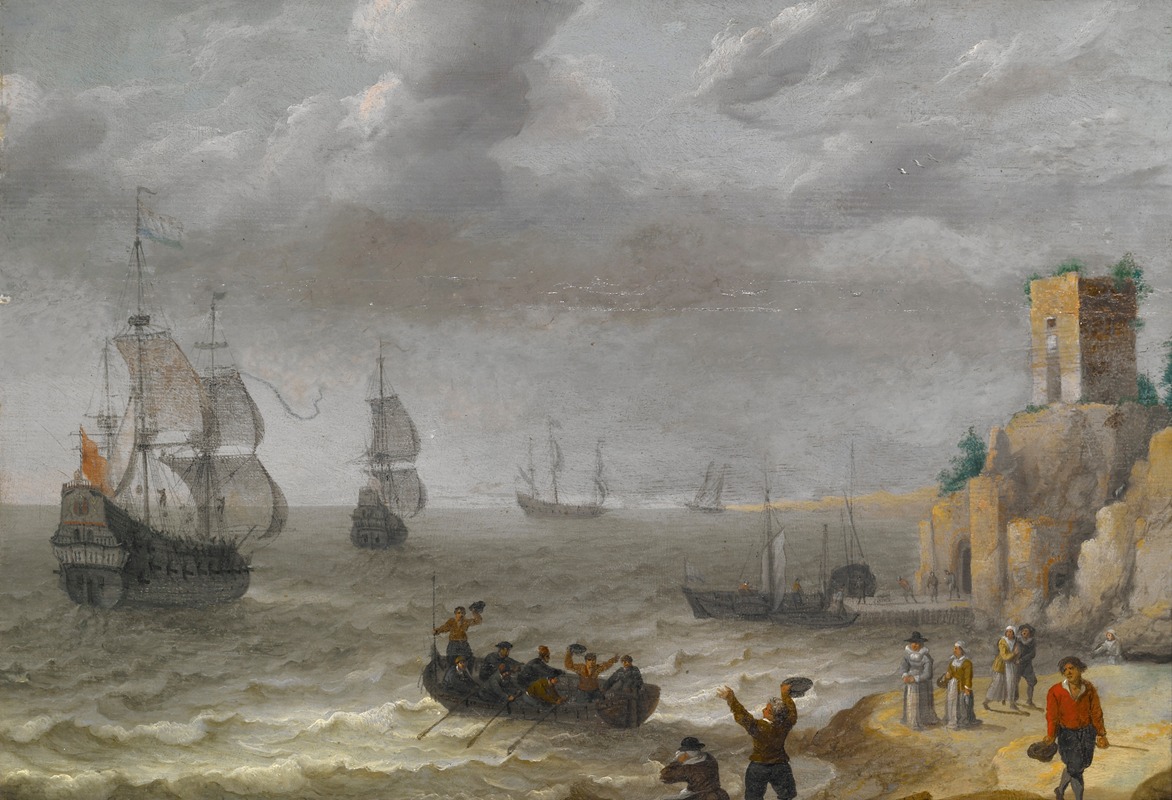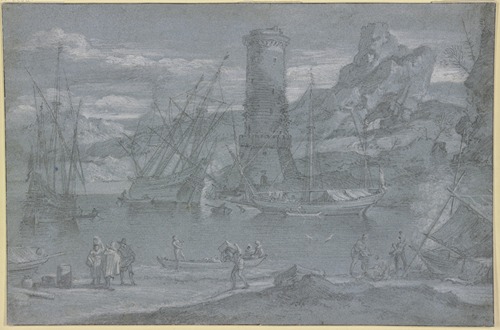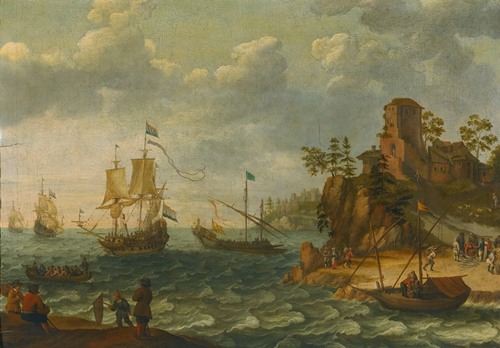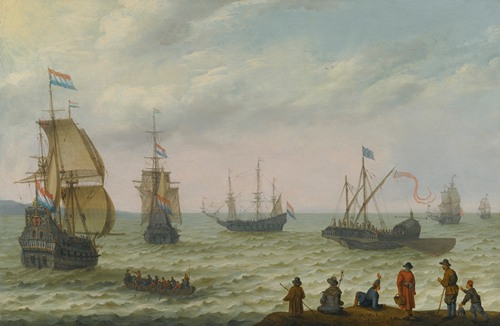
Abraham Willaerts was a Dutch Baroque painter, mostly of marine and harbor scenes. He also painted a number of single and family portraits.
Abraham Willaerts was born in Utrecht, the son of the painter Adam Willaerts. He trained with his father, a marine painter. He later studied with the Utrecht Caravaggist Jan van Bijlert in Utrecht. He became a member of the Utrecht Guild of Saint Luke in 1624. He travelled to Paris in 1628 where he worked in the workshop of the prominent religious and history painter Simon Vouet. He returned to his home country in 1635.
On 1637 or 1638 Willaerts sailed to Brazil serving in the entourage of Count John Maurice of Nassau-Siegen, the governor of the Dutch possessions in Brazil. In 1641 the Count sent him with the Dutch fleet from Brazil to Angola (where the Dutch had just taken São Paulo de Loanda and the island of Tomé) on a mission to observe the customs and manners of the indigenous people. He had returned to the Netherlands in 1644, where he stayed with the prominent architect and painter Jacob van Campen at his castle Randenbroeck near Amersfoort.
In 1659-60 he visited Rome. Here he joined the Bentvueghels, an association of mainly Dutch and Flemish artists working in Rome. It was customary for the Bentvueghels to adopt an appealing nickname, the so-called 'bent name'. Abraham Willaerts was reportedly given the bent name 'Indian'. This nickname was likely given him because of his travels among the Brazilian tribes. He probably travelled further south to Naples, where he may have found inspiration for his imaginary views of Mediterranean ports.
He died in Utrecht. His brother Isaac was also a marine painter.



